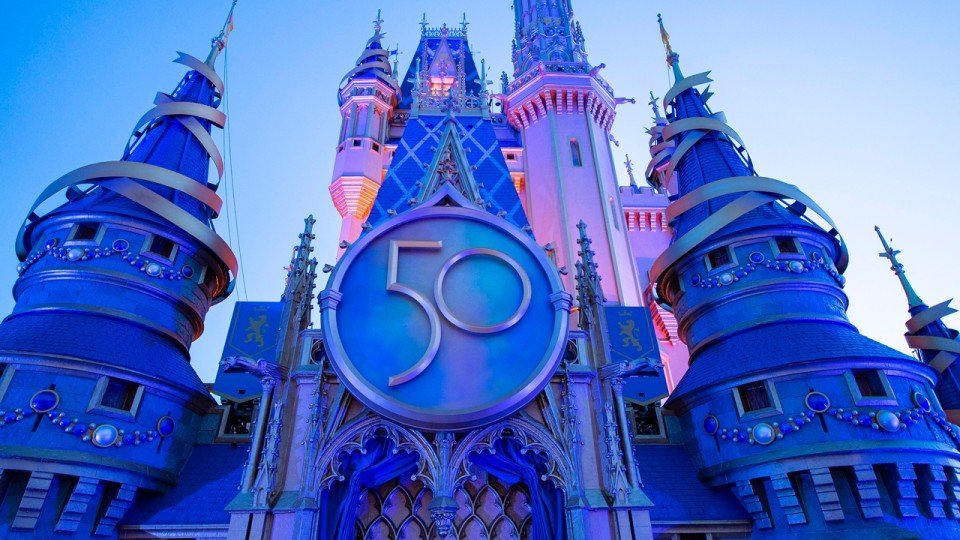It can be a pretty exciting prospect to introduce your littlest one to Disney parks for the first time. Many a longtime Disney-fan turned Disney-parent longs to share this experience with their growing family. Kids are part of what makes Disney such an enchanting place, so it’s understandable we’d think our children are totally onboard with the idea…Cue: MAGICAL MELTDOWN.Screaming infants, toddler tantrums, and massive meltdowns aren’t anyone’s idea of an ideal scenario at the Happiest (or Most Magical) Place on Earth. While kids of just about any age can get fussy or overwhelmed at Disney parks, kids under the age of 4-5 introduce entirely new elements of unpredictability. Infants, toddlers, and other teeny-tinies experience the world very different from us, and the intensity of a place like Disneyland or Walt Disney World can result in tears and tantrums on the most unexpected occasions.As a Florida local, I’ve had the opportunity to introduce our little one (who is barely hitting 9 months at the time of this writing) to Walt Disney World, something that isn’t always feasible for those traveling from abroad. While my daughter has largely enjoyed her few excursions to the Most Magical Place on Earth, on both occasions we’ve run into situations where she started to turn from cute to cranky. These situations can seem puzzling and mysterious, but often, there is a specific reason why kids lose it.I enjoy a good research-dive, and these moments got me thinking—what are some of the common situations that cause small children to meltdown in Disney parks, and more importantly, what are some tools you can have on hand to de-escalate the situation? Here’s what we found…1. Thirsty, hungry, and/or poopy!
Image: DisneyI don’t remember these three from The Seven Dwarfs Mine Train, but every parent of a small child is familiar with them. If your little one is feeling hungry, thirsty, or poopy, expect them to be very vocal about it, Disney magic be darned.Even parents who have the basics down at home can miss cues that your little one is asking for help with a core need in the midst of the craziness of a theme park. The remedy for most families requires a combination of staying mindful and preparing more than you might normally, and your approach will vary depending on your child. The key to overcoming most meltdowns is patience. Babies, toddlers, and small children have limited tools to communicate their feelings and needs, and this can be very frustrating. Instead of letting tempers fly, take a breath, and assess what the potential reasons behind the meltdown might be. Often, the root might be tied to basic needs.Flexibility and coming prepared can be very helpful in preventing these situations. For example, parents of infants and small toddlers who follow a loose feeding schedule may need to be more proactive than normal in staying ahead of baby’s feedings (I found myself setting a lot of phone alarms in this situation). Parents who feed based on cues may need to keep an eye out for earlier cues to tackle feedings, since you may not be in a convenient spot when an empty tummy strikes. If your little one is old enough for solids, it may be a good idea to keep some snacks or food pouches on hand rather than relying on whatever may be available in the parks.Hydration is another big factor to watch out for—Florida and California can both get spectacularly hot, so your little one may become thirsty more frequently than at home. Babies may need more milk than usual and toddlers may need a boost from some Pedialyte (which is available at Baby Care Centers) if water isn’t cutting it.Diaper changes are another area that can require some flexibility. Florida’s heat and humidity can do interesting things to tiny digestive systems (as I discovered when my daughter had a spectacular dirty diaper in the middle of the Maharajah Jungle Trek). The changing stations at the Baby Care Centers are wonderful, but you may not always be near one (or even a restroom) when the need arises. For infants, a portable changing pad and kit is a good thing to keep on hand if you need to do a quick discreet diaper change on the go (just be mindful of courtesy and hygiene—I’d avoid attempting a change in the middle of a restaurant, for example). Sanitizing wipes are a good thing to keep on hand for restroom changing stations. Disney tends to be better than most places keeping disposable liners available, but have a backup, just in case.2. “MOM, I’M MELTING!”
Image: DisneyFlorida and California both get HOT! Of the two, Florida takes the cake for brutal climate due to the state’s high humidity, which can make a late-summer Disney excursion feel like a trip into the Mad Hatter’s tea kettle.Overheating can happen quickly, so your best bet is to be proactive to keep small children cool. Move from shade to shade or use a stroller cover when possible. Apply sunscreen frequently and hydrate, hydrate, hydrate. For babies who bottle drink, consider leaving their milk cold instead of heating it up (one trick for storing breastmilk, for example, is to use a tightly sealed bottle inside an insulated metal water bottle filled with ice. For moms who pump, a popular recommendation is the Ceres Chill, a specialized cooler with a similar design).A must-have that I missed my first couple Disney excursions is a clip-on fan. I’m always looking to downsize our clunker of a baby kit, and I quickly learned Disney is no help at all on this front. Disney’s stroller fans are whimsical but preposterously huge and overpriced to boot. I didn’t have much luck finding an alternative at Target or Walmart. In the end, I ordered a small rechargeable fan with flexible tripod legs from Amazon, which has proven a lifesaver. I can perch it on a stroller or even on my shoulder while babywearing, and it’s even proven useful to cool little one down during nursing sessions under a cover. Just be mindful about keeping little fingers away (the one I purchased came with a mesh cover as an extra safety measure, but caution is still recommended).There are lots of other tactics you can employ to help keep children cool. For infants, a cool water bottle can be placed in the stroller with them. For toddlers and older children, treats like ice cream bars, Kakigori, or a sip of your blue or green milk can help. Moving into an indoor space with AC remains the best option in a pinch, though be mindful, Disney has joined Universal’s trend of setting the thermostat higher to cut costs in recent years.3. “All the THINGS!”
Image: DisneyDisney parks can be overwhelming places even to many adults, but for tiny children, the parks are absolutely WILD–a cacophony of new sights, smells, and quick moving activity. A small child can go from contentedly enchanted to cranky very quickly, simply due to over-stimulation.This can be challenging for those who tend to move quickly or keep to a busy itinerary during Disney trips, but if you will be visiting Walt Disney World or Disneyland with a small child, it is worth making plans to slow down and find ways to curb the excess stimuli. You can buy yourself some time with tricks to block out some of the craziness, such as utilizing noise-reducing headphones (they make varieties specifically for infants and toddlers), portable white noise generators, face-inward babywearing, or employing a cover over your stroller (I use this one which doubles as a very nice nursing cover—they even have Disney-themed patterns).In truth, hacks will only get you so far, though—at some point, your little one is likely going to need a break, either for a full nap or just some down time. The Baby Care Centers are an ideal place for this sort of stop, but there are situations where you may need to look elsewhere (such as if another parent is trying to calm a meltdown at the same time). In these cases, it can be worth it to know a few quiet places throughout the parks.Oh, one last area to be aware of in the “over-stimulation” category: souvenirs. It may be worth keeping a few inexpensive distractions and small Disney gifts (that you can pre-purchase for less) hidden away for moments when your toddler or small child locks onto a souvenir in a shop you don’t necessarily want to purchase. Little ones don’t tend to grasp the concept of, “I’m not buying that”, so distractions can be helpful to provide you a route of escape from sulk-ville.



